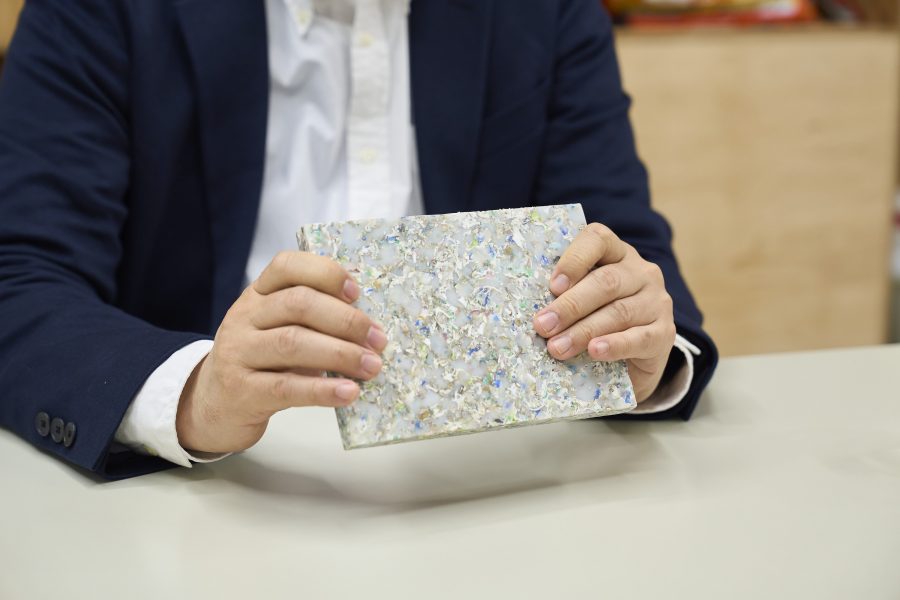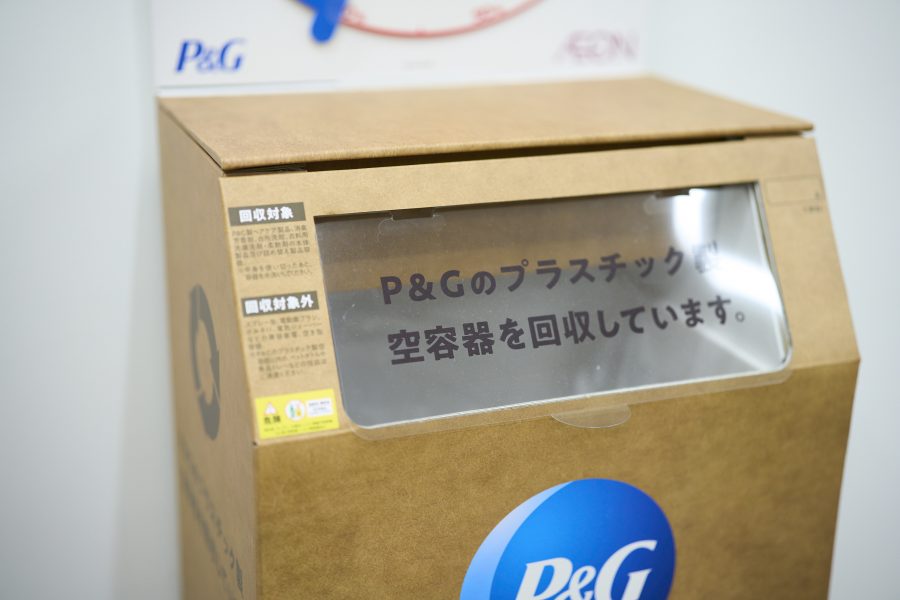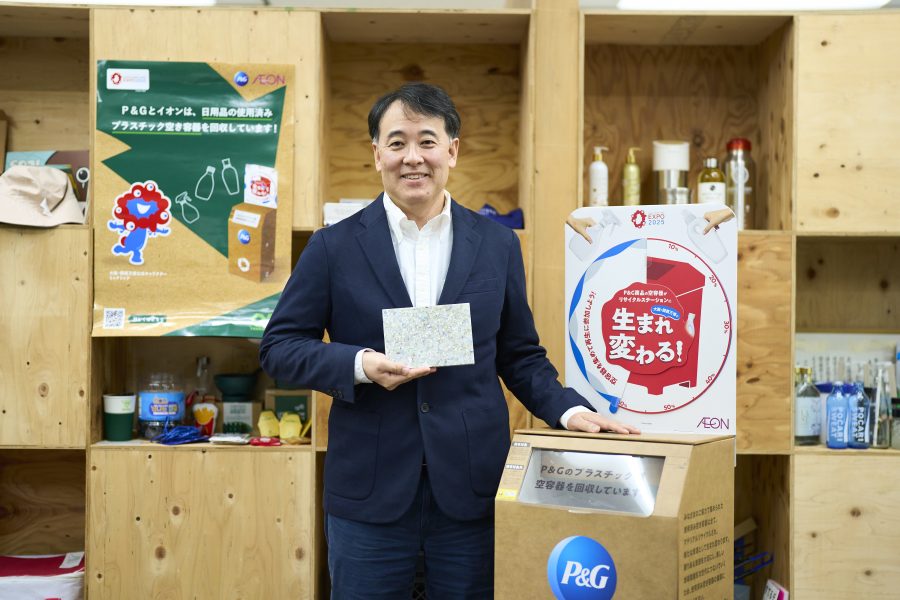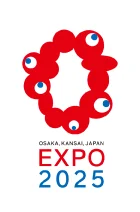
Four locations within the Expo venue are scheduled to have the trash boxes (resource collection boxes) produced from recycled plastic bottles and refill pouches of used everyday items gathered at Aeon Group stores. “Initially, we were worried about the sluggish progress in collecting plastic containers needed as raw materials, but thanks to everyone’s efforts on social media, the amount of plastic containers collected has been consistently increasing,” said Kawabata with a relieved look.
Resin components of each plastic container vary, and even if they are separated and collected, it is costly to turn them back into plastic products. “Most of them are either thrown out as ‘combustible waste’ or are used for ‘heat recovery’ as a heat source for power generation. But, for example, if you were to break down a wooden table that is no longer in use and utilize it as fuel for a barbecue, can that be considered recycling?’ so questions Kawabata regarding the awareness of the problem. “We will make trash boxes (resource collection boxes) to crush, clean, and compress the collected containers for the Expo venue in the Co-Design Challenge. We are currently in the process of making the planks that will be used. We are leaving small flakes on the planks to make it visible that a variety of materials have been used.” The finished planks look like they are covered in light blue and pink pastel-colored confetti. “It’s quite pretty, isn’t it?” said Kawabata with a smile.
The trash boxes, made from planks, will be used as stations for separating plastic bottles, cans, plastics, paper waste, etc. On the surface, an illustration shows the “story” of how collected resin products were transformed into trash boxes and set up as stations. In Japan, where the sorting and collection of waste have advanced, many people believe that collected trash is recycled, but in reality, large amounts of plastics are exported overseas, where they are used as heat sources in unnoticed places, or end up being discharged into the ocean. “We hope that this project will help more people understand this reality,” he hopes.
Kawabata said, “When visiting Japan, my friend from overseas was surprised to see that each strawberry was individually wrapped. Excessive packaging of gifts and food is probably what is increasing the amount of waste in Japan.” While it is necessary to promote recycling through technology, is that packaging basically necessary? We are now in an age where we must realize that the “convenience” and “comfort” that we have sought so far are actually a cost to the future of the planet. There is nothing wrong with using resin. We need to think about how we can recycle resources. “People are starting to realize that. I don’t think the future is bleak at all.” This is the message Kawabata wants to convey through the project.


Share this article


